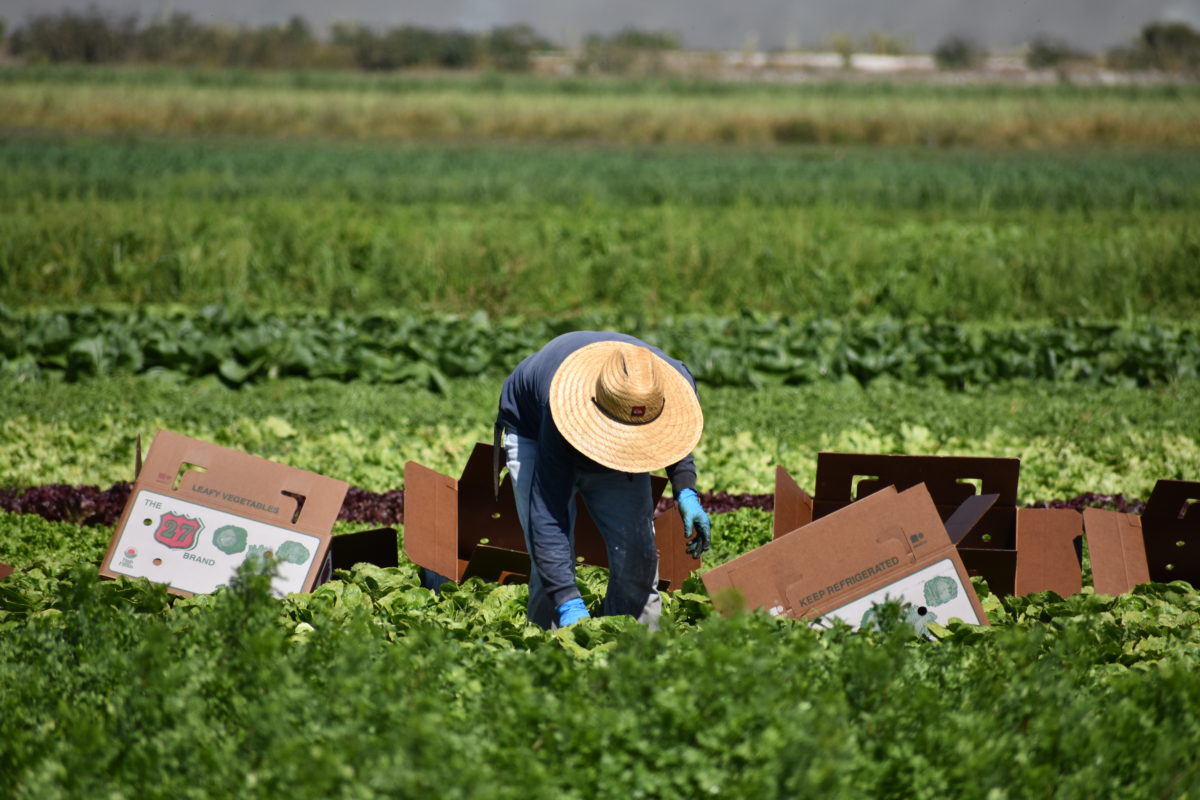Purple nutsedge can be a tough nut to crack for many tomato growers. Nathan Boyd, weed scientist at the University of Florida’s Gulf Coast Research and Education Center (GCREC), recently completed herbicide trials examining whether pre-emergent or post-emergent herbicides work better in controlling purple nutsedge in tomatoes. The trials took place at the GCREC in Wimauma. Purple nutsedge can be …
Herbicide Recommendations for Pepper Production
By Nathan Boyd Weed management can be a significant issue for many farms that grow peppers using a plasticulture production system. Nutsedge species can penetrate plastic mulches, and broadleaf weeds and grasses can emerge in the planting holes or in the rows between the raised, mulch-covered beds. Fumigants are an important component of weed management. However, except for metam products, …
Everett Griner Bids Farewell to Farm Broadcasting
Imagine being so passionate about your work that you never want to retire. That’s how Everett Griner feels about broadcasting. But at age 92, he has decided to turn off his microphone and hang it up for good. BACK TO THE BEGINNINGS Griner has been all around the world, thanks to his military experience. In the 1940s, instead of going …
VSC Expo Seminar Schedule Now Available
Growers seeking the latest information and research to help make them successful need look no further than the 2019 Vegetable and Specialty Crop Expo (VSC Expo) seminar program. Presented by experts from the University of Florida and the U.S. Department of Agriculture, the VSC Expo seminars will explore the best production practices and upcoming threats and trends facing the industry. …
New Tool to Navigate the H-2A Program
Navigating the H-2A program can be confusing and cumbersome. But, thanks to the U.S. Department of Agriculture (USDA), growers applying to the program now have a new tool in the form of an interactive H-2A checklist. According to Kaveh Sadeghzadeh, deputy director of communications for USDA farm production and conservation, “The H-2A checklist tool is the first phase of an …
2019 Legislative Sessions Wrap-Up
The 2019 legislative sessions in Florida, Georgia and Alabama have officially ended. Each year, agriculture advocates from all three states work tirelessly to fight for their industry. This article serves as a summary of how agriculture fared in the Florida, Georgia and Alabama sessions. Florida: Some Success, but More Work to Be Done By Adam Basford Going into the 2019 …
Managing Southern Blight in the Southeast
By Gary Vallad Southern blight is a severe disease of vegetables that favors warm and wet weather common to production in the Southeast. The disease is caused by the soilborne fungus Athelia rolfsii (synonymous with Sclerotium rolfsii), which has a broad host range of over 1,200 plants. Since the phaseout of methyl bromide, outbreaks of southern blight have increased on …
Whitefly-Transmitted Viruses Pose Problems in Vegetables
By Rajagopalbabu Srinivasan The sweetpotato whitefly, commonly referred to as whitefly, is a major problem in vegetable production in Georgia and the southeastern United States. The whitefly can colonize hundreds of host plants in the landscape and has established itself year-round in this region. The pest has a short life cycle and is equipped with prolific reproductive capabilities. Consequently, its …
Sneak Peek: July VSCNews Magazine
The 2019 Florida, Georgia and Alabama legislative sessions have officially wrapped up, and the July issue of VSCNews magazine will tell readers how agriculture fared in each state. Adam Basford, director of state legislative affairs for Florida Farm Bureau, discusses the successes and ongoing work in Tallahassee this session. Mary Ann Hooks, director of governmental affairs with the University of …
What to Do About Watermelon Gummy Stem Blight and Fusarium Wilt
By Nicholas S. Dufault Gummy stem blight (GSB) and fusarium wilt (FW) can be common problems for watermelon producers in the Southeast. These two diseases are caused by fungal pathogens from the same taxonomic subphylum, but that is where the similarities end. GSB tends to be more of a foliar pathogen that can move to the petioles and vines, and …











